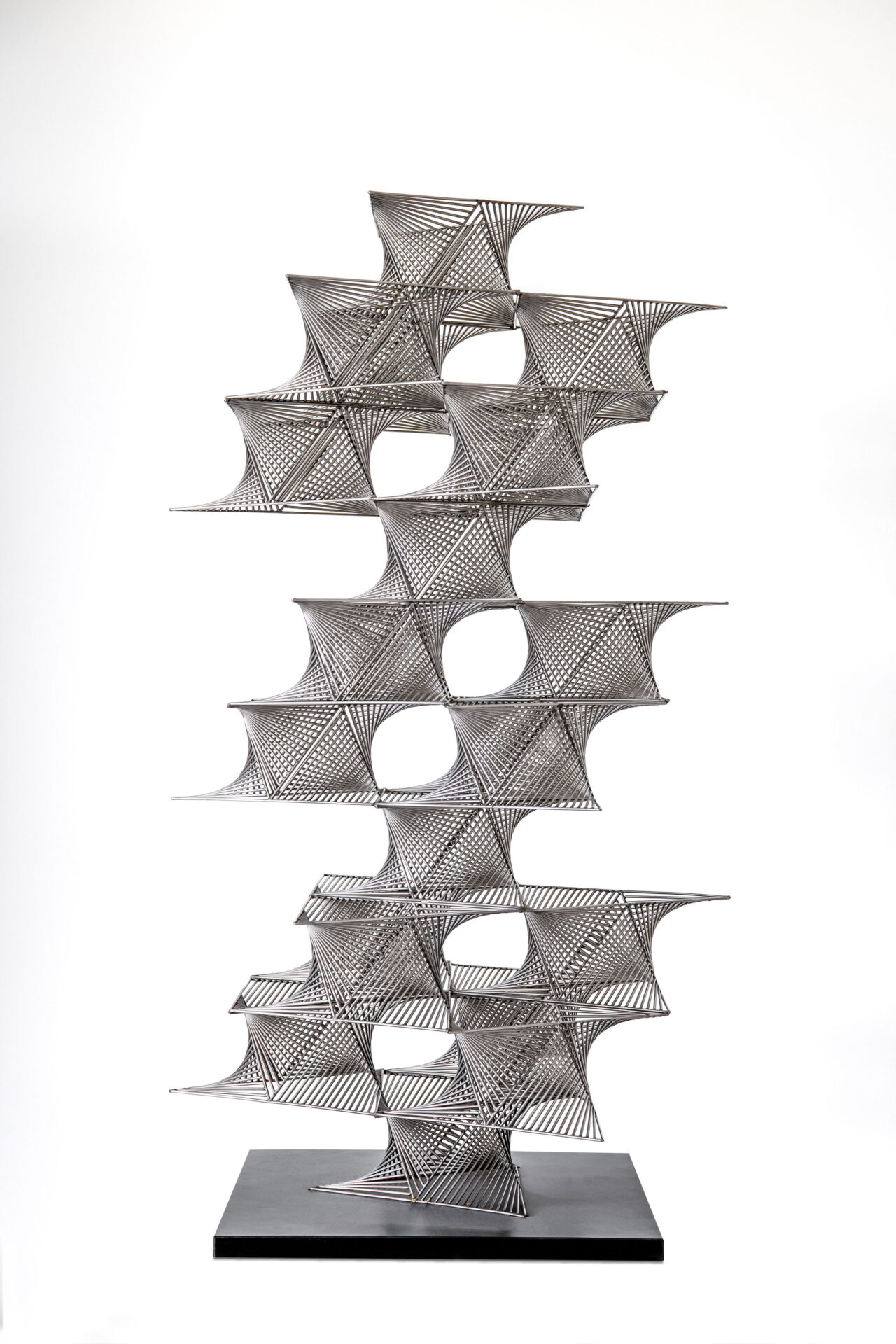Ángel Duarte, one of the most prominent figures in geometric abstraction in Spain, trained in his uncle’s goldsmithing workshop, a very useful education for his future artistic practice.
In 1954 he moved to Paris, where he founded the artist collective Equipo 57 three years later, together with other artists such as Agustín Ibarrola, Juan Cuenca, José Duarte and Néstor Basterretxea. This group, influenced by Russian Constructivism and by contemporary artists such as Serge Poliakoff and Jorge Oteiza, was notable for its abstract style, though with a clear mission for social change.
As she had done with Venezuelan optical artists Cruz-Diez and Soto, the Parisian gallerist Denise René supported Equipo 57 in the 1960s, devoting several exhibitions to them, which brought them great international renown. In spite of this, they disbanded in 1966. Duarte then pursued a solo career in the Swiss city of Sion, where he had taken up residence. He also founded another collective there, the Y Group, with the Swiss artists Walter Fischer and Robert Tanner, and carried out several art projects in the public space, mostly in Switzerland.
During this period, Duarte laid the foundations of what was to become his own style, characterised by the superimposition of steel rods in his sculptures, producing a hypnotic effect and endowing them with motion, like all the works associated with the kinetic movement, to which his practice belongs.
Despite his lack of scientific training, Duarte was a pioneering artist in the use of information technology, which he combined with his mathematical knowledge, leading him to work around the figure of the hyperbolic paraboloid, on which he constructed his metal sculptures.
Although other members of Equipo 57, such as Agustín Ibarrola and José Duarte, turned towards figurative art, Ángel Duarte always remained faithful to geometric abstraction, though with a social commitment and a democratising mission, as he obscured the individual authorship of his works through his participation in artistic groups and always had a clear intention to remain outside the art market. Indeed, the members of the Y Group refused to sell their works.
The Hortensia Herrero collection includes a work by Duarte made with metal rods, in which we can see the kinetic effect so characteristic of his sculptures.
